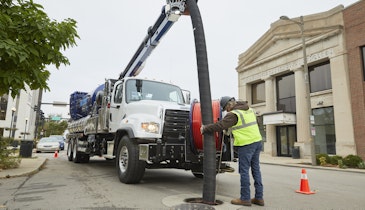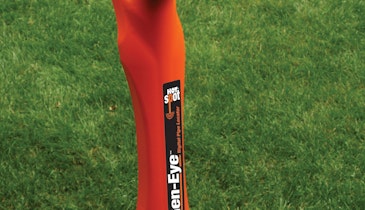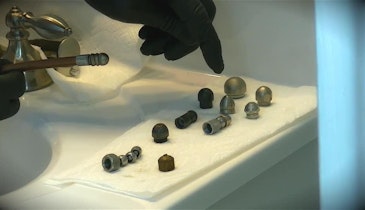Interested in Safety?
Get Safety articles, news and videos right in your inbox! Sign up now.
Safety + Get AlertsIt can be hard to know when it’s time to stop and rest. Workers are often pushing to get the job done faster, and sacrificing health and safety in the process.
“It’s well known that we are bad at judging our own fatigue levels,” says Silvano Angelone, a fatigue solutions consultant with Caterpillar Inc. “Often we think we are much more alert than we are.”
Caterpillar’s Cat Smartband, released in 2015, helps employers track employees’ fatigue level. The wrist-worn device detects an employee’s sleep and wake periods, and converts the data into an effectiveness score. If an employee is too tired, the score will be lower. When a score approaches 70 percent, that employee is considered to be fatigue impaired.
“Unlike the typical devices that are sold at your local electronics store, this Cat Smartband is 93 percent accurate at conducting a polysomnography sleep study, which is considered the gold standard in regard to sleep studies,” Angelone says. “When the wearer uses the device, it will calibrate to that individual and provide information in regard to fatigue and alertness or effectiveness.”
The Cat Smartband, a device built by Fatigue Science, is built to stand up to the rigors of construction work. The device measures motion with an internal 3-D accelerometer. When the employee stops moving, it assumes they are asleep.
Using the information
That information is downloaded into a software program that looks at patterns of activity and matches those with things like the time of day and how long it’s been since the person wearing the device last slept.
The Smartband provides supervisors with the capability to bring up the information from the devices on a tablet or computer. In addition to reviewing current levels of fatigue, the software also allows the supervisor to review the predicted fatigue level for the group by shift’s end. The level of information that the supervisor has access to can be controlled during the setup of the project.
“The technology has helped bring a greater awareness and understanding of fatigue and how it relates to one’s safety,” Angelone says. “In addition, it has often created a competitiveness with the operators to see who can achieve the best effectiveness score, which is achieved by improving sleep quality and quantity.”
Treating fatigue
Caterpillar Safety Services uses the technology, along with other tools, to conduct a Fatigue Risk Assessment. With that, a company can determine how to treat fatigue.
“As we continue to strive toward zero incidents, having the ability to connect workers only adds to making it a safer work environment for all involved,” Angelone says.
He adds that it isn’t unusual to hear from an operator involved in a Fatigue Risk Assessment using one of Caterpillar’s tools. “They’re surprised. They didn’t realize how tired they really were,” Angelone says. “It helps them understand their need to improve their safety.”





